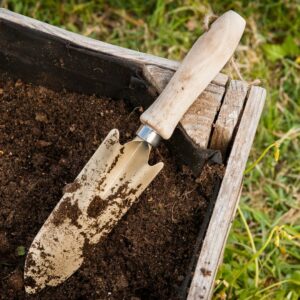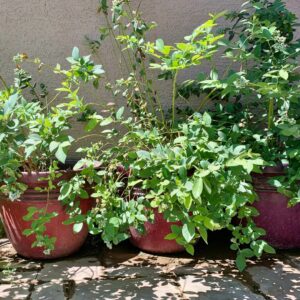Tomatoes Through the Seasons: Cultivating Resilience and Maximizing Harvests

If you create the right conditions for your tomato plants during the summer, the payoff can be extraordinary. Even if your plants don’t produce much fruit in the intense summer heat, those that survive with proper shade, nutrients, and care may reward you with up to three times the production in the fall. Resilient tomatoes thrive in cooler weather, making summer care essential for extended success.

The Emotional Connection to Gardening
For many gardeners, summer tomato care isn’t just about the harvest—it’s about the joy of nurturing life. There’s something profoundly satisfying about growing your own juicy, ripe, homegrown tomatoes, making it difficult to part with a plant you’ve tended. The heart of a gardener is rooted in dedication, patience, and pride in the beauty they cultivate, regardless of financial considerations.
Tips for Ripening and Harvesting
If your cherry tomatoes stay green and resist turning red in the summer, simple adjustments can help. Ensure they receive morning sun and afternoon shade to protect them from the harshest sunlight. To encourage ripening, use ripe bananas or other fruits placed on the ground near the plants. These fruits release ethylene, a natural hormone that helps trigger the ripening process.
Safety Considerations: Nightshade Plants
Tomatoes, as members of the nightshade family, contain toxins in their leaves and stems. These shouldn’t be fed to pets or livestock. Luckily, most animals instinctively avoid these plants, but it’s best not to force them. Other common nightshade plants, such as peppers and eggplants, also carry these toxins. While they’re unsafe for animals, they compost well, recycling nutrients back into the soil for future planting.
Key Strategies for Year-Round Tomato Care
To ensure your tomatoes thrive and transition into fall productivity, follow these tips:
- Shade and Protection: Use 30–40% shade cloth during summer to reduce stress on the plants.
- Consistent Watering: Keep plants hydrated but avoid waterlogging. Deep, consistent watering strengthens roots.
- Balanced Nutrition: Feed plants monthly with balanced fertilizers, and apply calcium sprays to prevent issues like blossom-end rot.
- Pruning: Remove damaged or unproductive branches to direct energy toward fruit production.
Companion Planting and Pollination
Tomato productivity can also be enhanced by companion planting. Grow flowers like marigolds or basil nearby to attract pollinators and deter pests. For summer challenges, manual pollination techniques (such as gently shaking plants or mimicking bee vibrations with an electric toothbrush) can help overcome pollinator shortages.
Composting Tomato Plants
When the time comes to retire your tomato plants, consider composting. Nightshade plants break down into nutrient-rich compost that supports future gardens, all without passing through the digestive system of an animal.
Plan for a Successful Summer Garden
Unsure of what to grow or how to protect your plants in extreme heat? A consultation can provide tailored advice to meet your gardening goals. Visit Agriscaping.com to learn more and prepare for a thriving garden all year long.


Read Our Latest Posts…
- Innovations in Elegant Edible Landscaping
 Expert tips for desert gardening, from plant zoning and efficient irrigation to soil care and agriscaping for a sustainable landscape.
Expert tips for desert gardening, from plant zoning and efficient irrigation to soil care and agriscaping for a sustainable landscape. - Herbs: More Than Just a Pretty Face
 Expert tips for desert gardening, from plant zoning and efficient irrigation to soil care and agriscaping for a sustainable landscape.
Expert tips for desert gardening, from plant zoning and efficient irrigation to soil care and agriscaping for a sustainable landscape. - 4 Tips for Raised Garden Success
 Expert tips for desert gardening, from plant zoning and efficient irrigation to soil care and agriscaping for a sustainable landscape.
Expert tips for desert gardening, from plant zoning and efficient irrigation to soil care and agriscaping for a sustainable landscape. - Mastering Microclimates And Optimize Your Yard for Year-Round Growing
 Expert tips for desert gardening, from plant zoning and efficient irrigation to soil care and agriscaping for a sustainable landscape.
Expert tips for desert gardening, from plant zoning and efficient irrigation to soil care and agriscaping for a sustainable landscape. - What Is a Cocktail Fruit Tree?
 Expert tips for desert gardening, from plant zoning and efficient irrigation to soil care and agriscaping for a sustainable landscape.
Expert tips for desert gardening, from plant zoning and efficient irrigation to soil care and agriscaping for a sustainable landscape.
